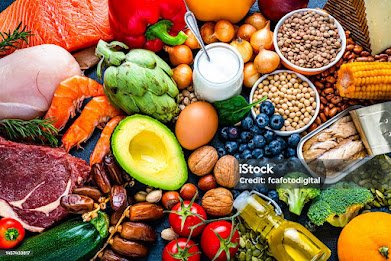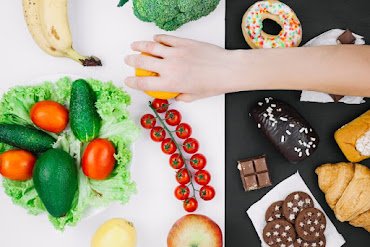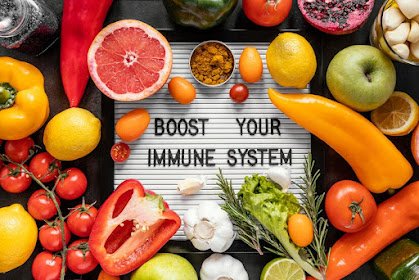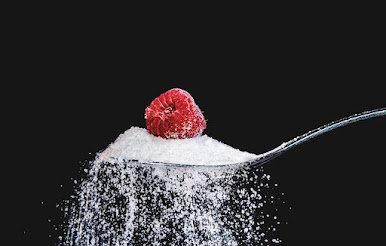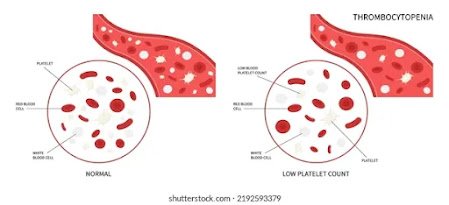16 Easy Dinner Ideas for a Mediterranean Diet Low in Inflammation
MAY 11,2024
NR.BALOCH
16 Easy Dinner Ideas for a Mediterranean Diet Low in Inflammation
These 30-minute dinners are perfect for anyone wishing to eat meals that support general health. Seafood, dark leafy greens, legumes, and herbs—ingredients with anti-inflammatory qualities—are used in these meals. By include these recipes in your diet, you can help relieve some of the bothersome symptoms of chronic inflammation, such as headaches, migraines, and brain fog. These dishes also follow the Mediterranean diet’s tenets, which are well known for their health advantages. These recipes, which range from the flavorful and nutritious Chicken Piccata Casserole to the tantalizingly spicy Chicken Tinga Baked Pasta, are full of protein.
Pasta with Baked Chicken Tinga
With leftover chicken tinga, a Puebla-style classic Mexican meal, this zesty baked pasta shines. The meal is enhanced with the ideal balance of creaminess and spice from the rich tomato-chipotle sauce.
Salmon with Creamy Spinach-Artichoke
The vegetables and sauce for this quick and simple dinner for four may be combined in a single skillet in a matter of minutes, while the salmon broils. Salmon is also loaded with heart-healthy omega-3 fatty acids and packed full of vital nutrients like potassium and B vitamins.
16 Easy Dinner Ideas for a Mediterranean Diet Low in Inflammation
Consuming foods that promote optimal well-being simply get simpler with these 30-minute meals
DIETS SPECIAL 10/10/20225 minutes to read
16 Easy Dinner Ideas for a Mediterranean Diet Low in Inflammation
These 30-minute dinners are perfect for anyone wishing to eat meals that support general health. Seafood, dark leafy greens, legumes, and herbs—ingredients with anti-inflammatory qualities—are used in these meals. By include these recipes in your diet, you can help relieve some of the bothersome symptoms of chronic inflammation, such as headaches, migraines, and brain fog. These dishes also follow the Mediterranean diet’s tenets, which are well known for their health advantages. From the protein-rich Chicken Piccata Casserole to the mouthwateringly spicy Chicken Tinga Baked Pasta,
Cucumber-Cheese Feta Salad with Lemon
This zesty and cooling cucumber chickpea salad with feta and lemon may be enjoyed as a standalone dish or combined with greens for a quick lunch or dinner. Although dill adds a grassy taste, you may easily replace it with another fresh herb such as chives, parsley, or oregano.
A Protein-Packed Chicken Piccata Casserole with 31 Grams
All the ingredients of the traditional meal are combined in this delicious, protein-rich chicken piccata casserole. This casserole doesn’t need the sauce to be prepared or dredged like regular piccata does. The sharpness of the lemon slices is tempered and their tanginess amplifies the taste profile when they are cooked in butter.
Pasta with Green Goddess Ricotta
With the help of lemon, anchovies, and herbs, this spaghetti sauce perfectly captures the tastes of green goddess dressing while remaining vibrant and zesty. A blend of parsley, tarragon, chives, and basil is really effective, but you can use any mix of herbs that you have on hand. The creamy texture is expertly counterbalanced by the slight acidity from the lemon juice, and the inclusion of ricotta cheese adds a rich, velvety texture. To catch the sauce, we suggest shell-shaped pasta, but you may certainly use any kind of noodle in its place. Consider using peas or asparagus for an added boost of vegetables in the recipe.
Rice Bowls Inspired by Bibimbap
These brown rice bowls are influenced by Korean bibimbap, even though they are not entirely conventional. They have chopped vegetables, ground beef that is both sweet and spicy, and a fried egg on top. Gochujang is a fermented paste prepared with rice, soybeans, and chilies that lends layers of flavor and a light kick of heat. A small drizzle of toasted sesame oil adds a lovely nutty flavor to the meal, making it look and taste amazing.
Phyto-Inflammatory Beet and
Chicken Salad
Tart cherry juice concentrate provides flavor and anti-inflammatory properties, which are harnessed in this fast salad. When mixed with other ingredients like walnuts and beets, it makes a filling and healthy dish. Choosing precooked beets in a packet reduces mess and saves time. Find them with other prepared vegetables in the produce area.
Extra Verdant Pasta
You can add a lot of vegetables to your lunch with this simple and quick green spaghetti recipe. When cooked and combined with basil, pine nuts, and Parmesan cheese, kale and spinach become a vivid green sauce with a pesto-like taste. Savor this pasta dish without meat by adding grilled chicken or white beans for an additional protein boost.
Fish tacos with tilapia
Taking a cue from Korean bibimbap, indulge in these protein-packed brown rice bowls and stray from convention. They have sliced vegetables, a fried egg as a delectable garnish, and a mixture of sweet and spicy ground beef. Gochujang, a fermented paste produced from rice, soybeans, and chilies, gives the meal layers of complexity and a hint of heat. A thin drizzle of toasted sesame oil adds a lovely nuttiness to round out the tastes.
Please be aware that the output result’s language and tone of voice will resemble the original text that was provided.
Quick and Refreshing Fish Tacos with Tilapia
These tasty fish tacos made with tilapia are not only refreshing and easy to prepare, but they also have a flavor and texture that will take you to the beach. These tacos go well with flour or corn tortillas. Although we adore the mild flavor of tilapia, any white, flaky fish, such as cod or haddock, may be used in its place with equal ease and yield equally delicious results.
Quinoa, chicken, and fresh berries combined in a spinach salad
To make the dressing, just combine all the ingredients in a small container and take the grain bowl with you to work. When you’re ready to eat, combine the salad and dressing by shaking it well and tossing everything together. In case you lack time and don’t have any homemade dressing, a three-tsp store-bought olive oil vinaigrette can serve the same purpose. Use a microwaveable quinoa pouch and leftover or rotisserie chicken to cut down on prep time.
Bibim Naengmyeon
The sauce is the highlight of bibim naengmyeon; it’s a lovely blend of acidic, spicy, and sweet flavors that go well with the chewy noodles. Although eggs and meat are common toppings, this version eliminates them for a hassle-free vegan dinner. Add slices of grilled or fried tofu for a more filling dish. Since the noodles get rigid and hard to mix the longer they sit, it’s better to enjoy this meal right away.
Fried eggs paired with braised lentils and kale
Full in protein, these braised lentils are cooked with soft kale in a broth made from fire-roasted tomatoes and finished with a fried egg. It just takes a little time in the pan for microwaveable lentils to cook through. Feel free to substitute prepared or canned lentils if you have them on hand; just make sure to cook them for a little shorter amount of time so they don’t get overly soft. The dish is enhanced by the lovely touch of the egg’s runny, velvety yolk. Cover the pan and cook for a another 2 or 3 minutes if you like your yolks to be firmer.
20-Minute Limone Pasta
You can make this silky and zesty pasta al limone in 20 minutes. This dish highlights the tastes of these unusual lemons, which are native to Sorrento, Italy, which is well-known for their aromatic lemons with thick, rough rinds and a balanced sugar level that borders on sweet. But don’t worry if you don’t have Sorrento lemons—any big, firm, ripe lemon with a rough rind will work just fine. The greatest results are usually obtained from lemons with thicker skins since they yield more zest.
Farro Bowls with Grilled Vegetables and Black Beans
With the exception of the tortilla, these filling bowls have all the flavor of a black bean and veggie burrito. Rice is swapped out for chewy, nutty farro, and perfectly grilled veggies are dressed with a tart lime vinaigrette. Although these bowls taste great served cold, you may reheat the vegetables in a small skillet and warm the beans with a little vegetable broth if you’d like.
Pasta, Cashew, and Chickpea Salad with Mint-Cilant Vinaigrette
We think the dressing is the highlight of this salad. It adds a delicious crunch from the shallots and a tangy, citrus flavor. Cook the pasta and combine everything after chopping the vegetables and making the dressing. Prepare to savor this incredibly tasty salad!
